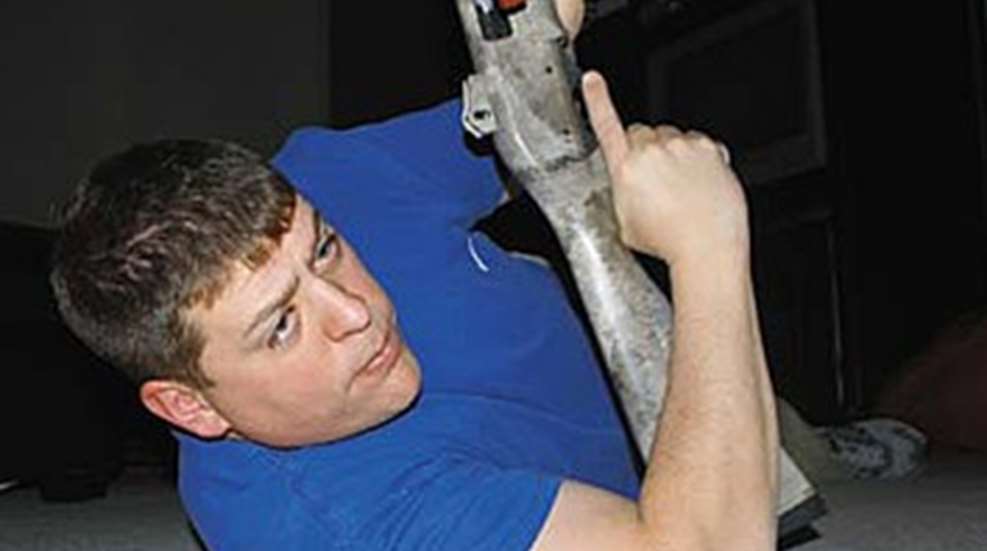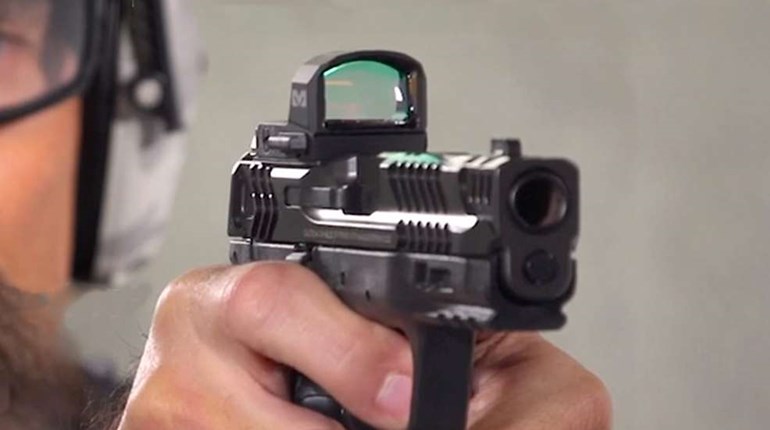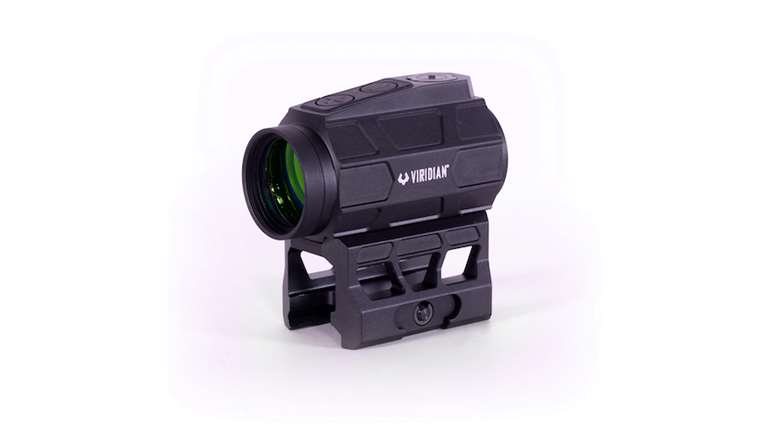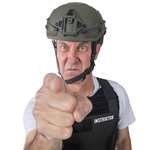
Unfortunately, since most folks just flat out enjoy some good trigger time, fringe techniques such as ground fighting often fall by the wayside.
Some will surely scoff at the idea of being on the ground in the first place. But, in the event of a home invasion, you just don't know what will happen. There's an infinite number of plausible scenarios that would leave an armed citizen suddenly panic-stricken and fighting for his life from the ground, ranging from tripping over a child's toy to the bad guy delivering a bone-jarring forearm.
Let's face it, we're talking about training for an event we hope never comes. But, the fact remains the very things that make a pump shotgun difficult to run from a standing position become nearly impossible to perform from a prone position without training.
"You've got to have the freedom to move the fore-end, and you've got to have the freedom to reach the loading port," says George Harris, director of training at the SIG Sauer Academy. "You have to have body position that allows your non-dominant hand to have range of motion to move the fore-end fully in both directions. If you don't move it fully rearward, you short-stroke the action, and if you don't go completely forward (to lockup) it won't go off.
"You need to be able to operate the fore-end so you can run the gun, and you need to have access to the loading port so you can continuously stuff ammunition in this thing," Harris continues. "As a right-handed shooter, that all works by rolling to your right side."
I ran through prone-position firing drills during a Tactical 870 course at High Caliber Training (HCT), a civilian training center located just outside Memphis, TN. Along with standing and kneeling firing positions, instructors forced us to engage targets from a prone position, which immediately revealed the difficulties in working the pump from the ground.
For military and law enforcement personnel, a belt or other type of ammo carrier is incorporated into the training. Civilians, however, fight with what they have in or on the gun. And knowing the fight can end up on the ground can even influence how one carries ammo. Using a receiver-mounted sidesaddle ammunition carrier on a pump gun is a common and preferred method for law enforcement, as well as for many civilians. That means shells are carried on the left side of a standard shotgun with a right-side ejection port. Knowing how to roll to access that ammo, and how to load it into the gun, can define how you set up your system.
For example, by inserting the shells brass-down in the carrier, a right-handed shooter could set up his gun with the intention of rolling to the right from a prone position. Using his left, or non-firing hand, he would simply pull the shell from the carrier and feed it straight into the loading port on the underside of the gun. However, if a shooter prefers to go over the top to dump rounds into the port, shells should be inserted into the carrier brass-up. Lefties working with a standard pump gun—meaning the ejection port is on the right side of the receiver—might prefer to position shells in the carrier brass-up, so an easy reach with right hand over the top of the receiver allows quick access to the port to load one shell.
For all the difficulties most shooters encounter when first operating and loading a shotgun from the ground, shooting can pose an even bigger problem. Since most shotguns feature a length-of-pull designed for a standing position, fighting from the ground becomes more difficult whether you're in a prone position or shooting from your back.
"When you're talking about defensive shotgun work, you're aiming this gun like a rifle," Harris points out. "When you're on your back, get the best sight alignment you can to get the muzzle on target. You have to address nonstandard shooting positions, particularly if you're on your back and shooting to the front. There's no way you can get the gun to your cheek like it's supposed to be. You just have to anchor the buttstock on the upper torso so you can see the sights, then operate the trigger accordingly."
Ground fighting with a home-defense tool as cumbersome as a shotgun is an acquired skill set. The individual plays a role in defining those skills—body type, preferences and prior training all determine how and why one should train to fight. Realizing the potential pitfalls of being on the ground is paramount in a life-and-death scenario, and proper training is the key to learning how to deal with them.
"You don't know what your range of motion is, or if you can even get into these positions before you do it, the variables are so great," Harris adds. "If you're on the ground and you need to shoot someone, you need to get the muzzle on target. You've also got to be able to operate the action, and you have to be able to feed it, so you have to be able to get ammunition from wherever you carry it to the loading port."
Knowing and understanding how to mount, fire, manipulate and feed a shotgun from the ground are lessons best learned on a square range. To encounter these obstacles for the first time during an armed attack is a recipe for disaster.




































